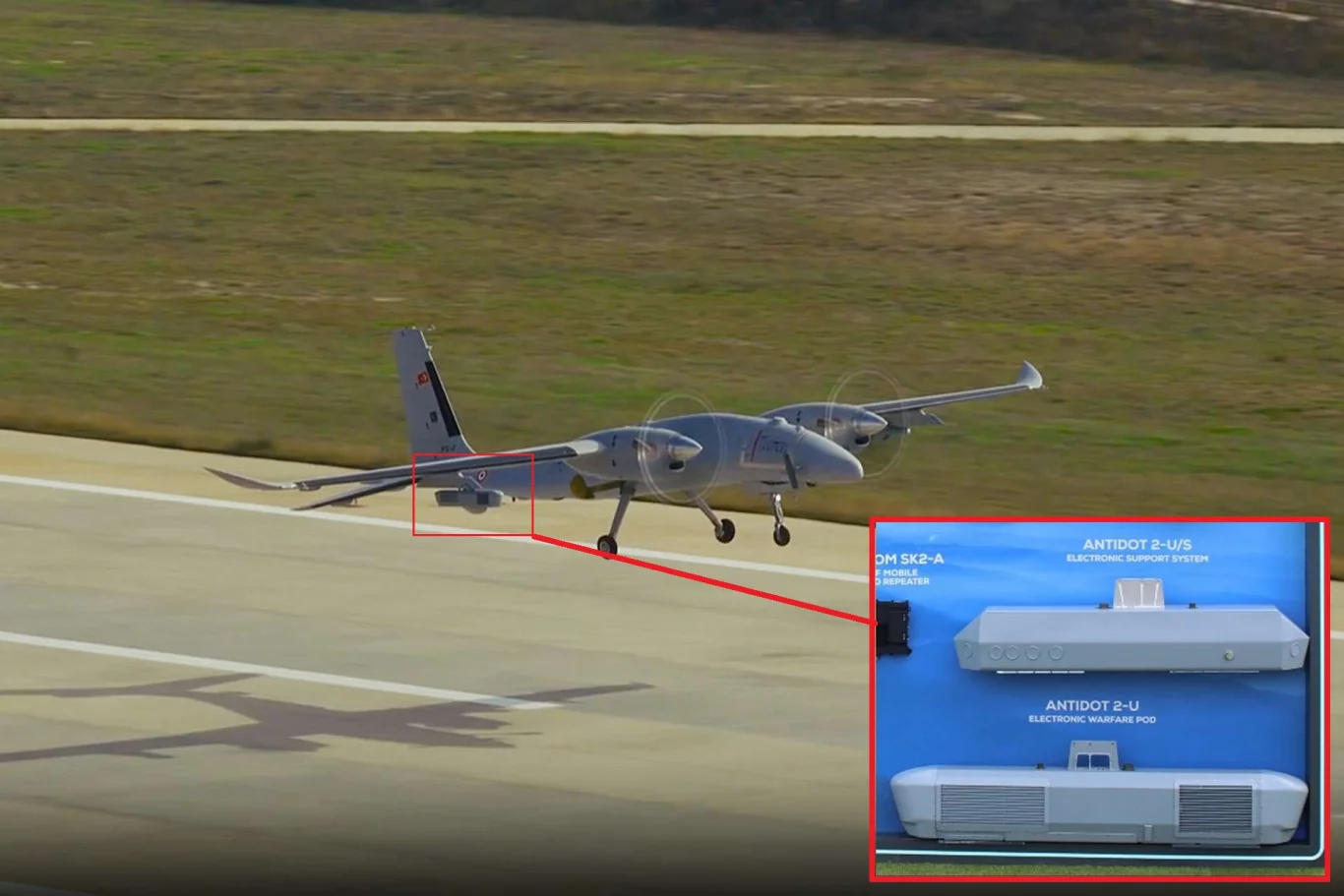In a significant stride that underscores Türkiye’s relentless pursuit of defense technological independence and its growing prowess in unmanned systems, the formidable Bayraktar Akıncı high-altitude, long-endurance (HALE) combat drone is reportedly shifting into a crucial new role: electronic warfare (EW). This transformative capability is being enabled by the integration of an advanced EW pod suite developed by Aselsan, Türkiye’s leading defense electronics company. This evolution marks the Akıncı not just as a strike and reconnaissance platform, but as a multi-spectral asset capable of dominating the electromagnetic spectrum – a decisive factor in modern warfare.
The Akıncı, developed by Baykar, has already established itself as a cornerstone of Türkiye’s drone fleet. Known for its impressive payload capacity, long endurance, and ability to carry a diverse range of munitions, it has proven effective in various operational scenarios, from surveillance to precision strikes. However, modern battlefields are not just about kinetic engagements; they are increasingly fought and won in the electromagnetic spectrum. The ability to sense, interpret, and disrupt enemy electronic signals can provide a decisive advantage, effectively blinding, deafening, or confusing an adversary. This is where Aselsan’s new EW suite comes into play.
Aselsan’s expertise in electronic systems is globally recognized. The development of a sophisticated EW pod for the Akıncı signifies a mature capability to design and produce cutting-edge systems for electronic intelligence (ELINT), electronic support measures (ESM), electronic countermeasures (ECM), and potentially electronic attack (EA).
- Electronic Intelligence (ELINT) and Electronic Support Measures (ESM): These capabilities allow the Akıncı to passively detect, identify, and locate enemy radar systems, communication networks, and other electronic emitters. This provides invaluable signals intelligence (SIGINT), building a detailed electronic order of battle (EOB) that informs strategic and tactical decisions.
- Electronic Countermeasures (ECM) / Electronic Attack (EA): This is the active component, where the Akıncı can jam, spoof, or otherwise disrupt enemy radar and communication systems. Imagine an Akıncı flying into a contested airspace, effectively creating a “bubble” of electronic interference that degrades the adversary’s ability to track friendly forces or communicate effectively. This can open corridors for manned aircraft, protect ground forces, or disrupt enemy command and control.
The integration of such an advanced EW suite onto a HALE platform like the Akıncı is particularly strategic. Its long endurance allows for persistent EW operations over extended periods, gradually wearing down enemy defenses or providing continuous support to offensive operations. Its high-altitude flight profile makes it difficult to detect and engage, maximizing the effectiveness and survivability of its EW payload. This combination of persistence, altitude, and sophisticated EW capabilities creates a powerful force multiplier, enhancing the survivability of other assets while degrading the enemy’s ability to fight.
For Türkiye’s defense strategy, this move holds profound implications. It:
- Enhances Air Power: The Akıncı’s EW role allows the Turkish Air Force to conduct complex suppression/destruction of enemy air defense (SEAD/DEAD) missions more effectively, paving the way for manned aircraft in high-threat environments.
- Increases Self-Reliance: Developing and integrating indigenous EW systems reduces Türkiye’s dependence on foreign suppliers for critical defense technologies, aligning with its broader “national and local” defense industry policy.
- Boosts Export Potential: A multi-role Akıncı with advanced EW capabilities becomes an even more attractive export product for nations seeking sophisticated yet cost-effective unmanned solutions, further cementing Türkiye’s position in the global drone market.
- Regional Influence: Mastering advanced EW on HALE platforms strengthens Türkiye’s geopolitical standing, providing it with a significant technological edge in regional security dynamics.
The transformation of the Akıncı into an electronic warfare platform also signifies a sophisticated understanding of modern aerial combat. The era of relying solely on stealth or brute force is evolving; the ability to dominate the electromagnetic spectrum is becoming just as, if not more, crucial. Türkiye’s investment in this capability, through the synergy between Baykar’s drone platforms and Aselsan’s electronics, demonstrates a forward-thinking approach to future warfare. It ensures that the Akıncı remains at the cutting edge, capable of adapting to new threats and playing an even more vital role in Türkiye’s national security strategy. This evolution is not merely an upgrade; it’s a strategic redefinition of the Akıncı’s mission and a testament to Türkiye’s burgeoning defense innovation.




